
Cheyenne: The Heartbeat of the Old West
Discover Cheyenne, Wyoming’s capital, where historic charm meets vibrant culture and outdoor adventure in the heart of the American West.
Cheyenne, the capital city of Wyoming, is a captivating blend of rich history and modern charm. Nestled against the backdrop of the Rocky Mountains, this city offers an authentic taste of the American West. From its historic architecture to its vibrant cultural scene, Cheyenne is a destination that promises a memorable experience for every visitor. One of the highlights of visiting Cheyenne is the annual Cheyenne Frontier Days, the world’s largest outdoor rodeo and Western celebration. Held every July, this event draws thousands of visitors who come to enjoy rodeo competitions, parades, live music, and carnival rides. It’s an exhilarating way to immerse yourself in the Western heritage that defines this city. Beyond the rodeo, Cheyenne is home to several fascinating museums and historical sites. The Wyoming State Capitol building is a must-see, with its stunning architecture and rich history. The Cheyenne Depot Museum offers insights into the city’s railroad past, while the Old West Museum showcases an impressive collection of Western artifacts. For nature enthusiasts, Cheyenne offers easy access to outdoor adventures. Nearby Curt Gowdy State Park is perfect for hiking, fishing, and mountain biking. The city’s parks and green spaces provide a tranquil escape, with Lions Park and Holliday Park offering beautiful landscapes and recreational activities. Cheyenne’s dining scene is also worth exploring, with a variety of restaurants serving everything from hearty cowboy cuisine to contemporary dishes. Don’t miss the chance to try local favorites like bison burgers and cowboy chili. With its unique blend of history, culture, and natural beauty, Cheyenne is a destination that invites you to step back in time and experience the spirit of the Old West.
Local tips in Cheyenne
- Visit during Cheyenne Frontier Days in July for an unforgettable experience.
- Explore the Wyoming State Capitol building early in the day to avoid crowds.
- Spend a day at Curt Gowdy State Park for outdoor activities and scenic views.
- Try local dishes like bison burgers and cowboy chili at downtown restaurants.
- Check out the Cheyenne Depot Museum for a fascinating look at the city's railroad history.
Cheyenne: The Heartbeat of the Old West
Cheyenne, the capital city of Wyoming, is a captivating blend of rich history and modern charm. Nestled against the backdrop of the Rocky Mountains, this city offers an authentic taste of the American West. From its historic architecture to its vibrant cultural scene, Cheyenne is a destination that promises a memorable experience for every visitor. One of the highlights of visiting Cheyenne is the annual Cheyenne Frontier Days, the world’s largest outdoor rodeo and Western celebration. Held every July, this event draws thousands of visitors who come to enjoy rodeo competitions, parades, live music, and carnival rides. It’s an exhilarating way to immerse yourself in the Western heritage that defines this city. Beyond the rodeo, Cheyenne is home to several fascinating museums and historical sites. The Wyoming State Capitol building is a must-see, with its stunning architecture and rich history. The Cheyenne Depot Museum offers insights into the city’s railroad past, while the Old West Museum showcases an impressive collection of Western artifacts. For nature enthusiasts, Cheyenne offers easy access to outdoor adventures. Nearby Curt Gowdy State Park is perfect for hiking, fishing, and mountain biking. The city’s parks and green spaces provide a tranquil escape, with Lions Park and Holliday Park offering beautiful landscapes and recreational activities. Cheyenne’s dining scene is also worth exploring, with a variety of restaurants serving everything from hearty cowboy cuisine to contemporary dishes. Don’t miss the chance to try local favorites like bison burgers and cowboy chili. With its unique blend of history, culture, and natural beauty, Cheyenne is a destination that invites you to step back in time and experience the spirit of the Old West.
When is the best time to go to Cheyenne?
Iconic landmarks you can’t miss
Southeast Wyoming Welcome Center
Explore the Southeast Wyoming Welcome Center, a vibrant visitor hub featuring local culture, essential travel information, and stunning architectural art.

2 Doors Down
Experience a delightful blend of American and Italian cuisine at 2 Doors Down in Cheyenne, where families gather for great food in a cozy atmosphere.

Cheyenne Frontier Days
Join the celebration of the American West at Cheyenne Frontier Days, where rodeo thrills and live music unite for an unforgettable experience.

Terry Bison Ranch Resort
Experience the Wild West at Terry Bison Ranch Resort, where adventure, horseback riding, and serene camping await in the heart of Wyoming.

Curt Gowdy State Park
Explore the breathtaking landscapes and exhilarating outdoor activities at Curt Gowdy State Park, a haven for nature lovers in Wyoming.

Cheyenne Botanic Gardens
Explore the vibrant beauty of Cheyenne Botanic Gardens, a serene oasis in Wyoming filled with diverse flora and peaceful pathways for all to enjoy.

Cheyenne Depot Museum
Explore the Cheyenne Depot Museum, where the history of railroads in Wyoming comes to life through fascinating exhibits and vintage locomotives.

Wyoming State Museum
Explore the captivating history and culture of Wyoming at the Wyoming State Museum, a must-visit for history enthusiasts and curious travelers alike.

Holliday Park
Explore the natural beauty of Holliday Park in Cheyenne, Wyoming, featuring serene ponds, lush landscapes, and charming wildlife for a peaceful outdoor experience.

The Historic Plains Hotel & Restaurant
Experience the charm of the Old West at The Historic Plains Hotel & Restaurant, where history meets comfort in Cheyenne, Wyoming.

Big Boy Steam Engine 4004
Discover the Big Boy Steam Engine 4004 in Cheyenne, a colossal symbol of American railroading history, offering a unique glimpse into the steam era.

Accomplice Beer Company
Discover the heart of Cheyenne at Accomplice Beer Company, where craft beer meets American cuisine in a lively brewpub atmosphere.

Cheyenne Frontier Days Old West Museum
Explore the rich heritage of the American West at the Cheyenne Frontier Days Old West Museum, home to fascinating exhibits and cowboy culture.

Flippers Family Arcade
Experience endless fun at Flippers Family Arcade in Cheyenne, where gaming excitement meets family-friendly entertainment for all ages.
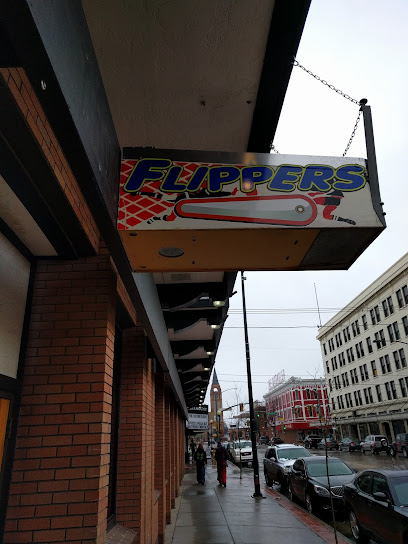
Wyoming State Capitol
Explore the Wyoming State Capitol: A historic landmark blending stunning architecture with rich state history in Cheyenne.

Unmissable attractions to see
Southeast Wyoming Welcome Center
Explore the Southeast Wyoming Welcome Center, a vital resource for travelers offering local insights, cultural exhibits, and stunning landscapes in Cheyenne, WY.

Cheyenne Frontier Days
Dive into the heart of cowboy culture at Cheyenne Frontier Days, the largest outdoor rodeo and western celebration in the world.

Cheyenne Botanic Gardens
Explore the stunning Cheyenne Botanic Gardens, a serene oasis of nature in Wyoming, perfect for relaxation, education, and family fun.

Cheyenne Botanic Gardens
Explore the Cheyenne Botanic Gardens, a vibrant oasis featuring diverse plant collections and serene landscapes that inspire tranquility and wonder.

Lions Park
Discover the natural beauty and recreational charm of Lions Park, a serene oasis in the heart of Cheyenne, Wyoming, perfect for family outings and relaxation.

Cheyenne Depot Museum
Discover the captivating history of railroads at the Cheyenne Depot Museum, a must-visit attraction for travelers in Cheyenne, Wyoming.

Wyoming State Museum
Explore Wyoming's vibrant history and culture at the Wyoming State Museum in Cheyenne, a captivating destination for all history enthusiasts and tourists.

Cheyenne Depot Museum
Uncover the legacy of railroads in Cheyenne at the Cheyenne Depot Museum, where history comes to life in an iconic setting.

Wyoming State Museum
Explore the captivating history and culture of Wyoming at the Wyoming State Museum, a must-visit tourist attraction in Cheyenne.
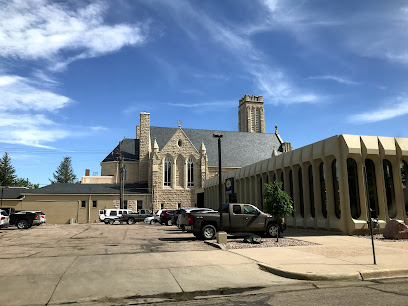
Big Boy Steam Engine 4004
Discover the grandeur of the Big Boy Steam Engine 4004 in Cheyenne, Wyoming – a testament to railway history and engineering excellence.

Cheyenne Frontier Days Old West Museum
Explore the rich history and culture of the American West at the Cheyenne Frontier Days Old West Museum, an iconic destination in Cheyenne, Wyoming.

Cheyenne Frontier Days Old West Museum
Experience the rich heritage of the American West at Cheyenne Frontier Days Old West Museum, a captivating destination for history lovers and tourists.

Wyoming State Capitol
Explore the historic Wyoming State Capitol in Cheyenne, a stunning architectural marvel steeped in rich heritage and vibrant history.
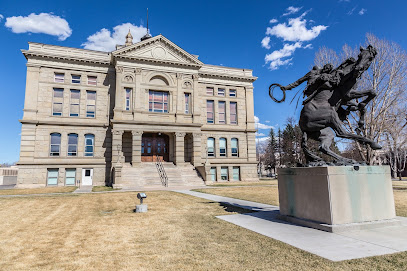
Cheyenne Depot Plaza
Explore the historic charm and vibrant culture of Cheyenne Depot Plaza, a must-visit landmark in the heart of Wyoming's capital.

Wyoming Historic Governors' Mansion State Historic Site
Discover the rich history and architectural beauty of the Wyoming Historic Governors' Mansion in Cheyenne, a must-visit for history enthusiasts.

Essential places to dine
Texas Roadhouse
Experience authentic American cuisine at Texas Roadhouse in Cheyenne - where great food meets lively atmosphere.

Wyoming's Rib & Chop House - Cheyenne
Experience the best steak and barbecue at Wyoming's Rib & Chop House in Cheyenne – where family-friendly dining meets fine culinary art.

Chick-fil-A
Experience delicious Southern-style chicken dishes at Chick-fil-A in Cheyenne – where fast food meets family-friendly dining.

Sanford's Grub & Pub
Discover the heart of Cheyenne at Sanford's Grub & Pub – where flavorful grill dishes meet a lively pub atmosphere.

2 Doors Down
Discover the delightful fusion of American comfort food and Italian classics at 2 Doors Down in Cheyenne, Wyoming - perfect for families and food enthusiasts.

Olive Garden Italian Restaurant
Savor authentic Italian cuisine at Olive Garden in Cheyenne—where every meal feels like a celebration.

Hacienda Guadalajara Cheyenne
Experience authentic Mexican flavors at Hacienda Guadalajara in Cheyenne, where vibrant ambiance meets delicious cuisine.
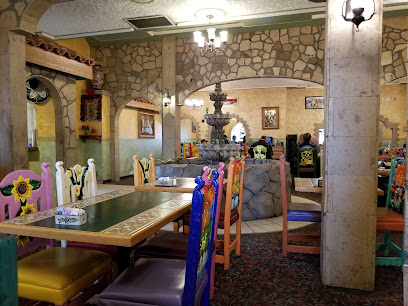
Wasabi
Discover the vibrant flavors of Japan at Wasabi in Cheyenne – a delightful blend of sushi and traditional Japanese dishes awaits you.
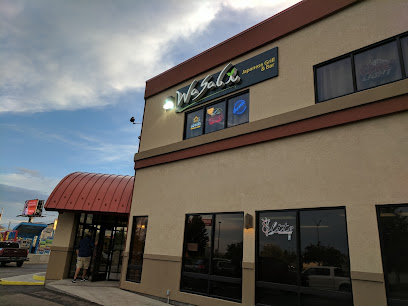
Perkins Restaurant & Bakery
Experience the best of American comfort food at Perkins Restaurant & Bakery in Cheyenne – where hearty meals meet delightful baked treats.

Down Home Diner
Indulge in hearty breakfasts at Down Home Diner in Cheyenne – where comfort food meets warm hospitality!

Guadalajara Mexican Restaurant Cheyenne
Experience the vibrant flavors of Mexico at Guadalajara Mexican Restaurant in Cheyenne - where every meal tells a story.

Village Inn
Experience delightful breakfasts and homemade pies at Village Inn in Cheyenne - your perfect family-friendly dining destination.

The Albany
Experience delightful dining at The Albany in Cheyenne - where culinary excellence meets vibrant atmosphere.
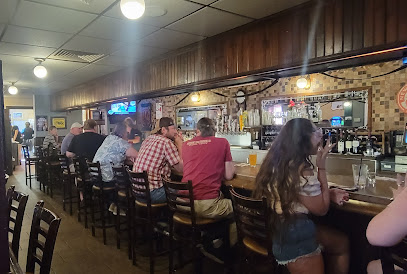
Applebee's Grill + Bar
Experience the warmth of American cuisine at Applebee's Grill + Bar in Cheyenne—perfect for families and friends seeking delicious comfort food.

Luxury Diner
Experience the best breakfast in Cheyenne at Luxury Diner - where delicious American classics meet warm hospitality.

Markets, malls and hidden boutiques
Frontier Mall
Explore Frontier Mall, Cheyenne's premier shopping destination with diverse shops, dining options, and entertainment for the whole family.

Frontier Square
Discover shopping, dining, and fun at Frontier Square, Cheyenne's premier shopping mall, where variety meets vibrant atmosphere.

Cheyenne Plaza Shopping Center
Experience the heart of Cheyenne at Cheyenne Plaza Shopping Center, a premier destination for shopping, dining, and entertainment in Wyoming.

Murdoch's Ranch & Home Supply
Explore Cheyenne's Murdoch's Ranch & Home Supply for an authentic shopping experience blending clothing, hardware, and sporting goods in one welcoming location.

NeeSee's Dresses
Explore a stylish collection of women's clothing at NeeSee's Dresses in Cheyenne, Wyoming—where fashion meets quality and personal service.

The Wrangler
Explore The Wrangler, your premier destination for authentic cowboy boots and Western apparel in Cheyenne, Wyoming, where Western culture comes alive.
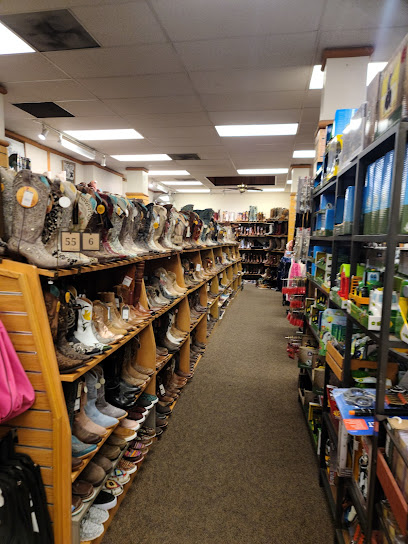
Ernie November Inc.
Experience the heartbeat of Cheyenne's music scene at Ernie November Inc., a treasure trove for vinyl lovers and musicians alike.

Alexis Drake
Explore Alexis Drake: A premier handbags and accessories shop in Cheyenne, offering exquisite fashion items that elevate your style.

Olympus Games
Discover the ultimate destination for gamers and comic enthusiasts in Cheyenne, Wyoming, at Olympus Games – your hub for fun and community.

Eclectic Elephant
Explore Eclectic Elephant, Cheyenne's charming antique store filled with unique collectibles that tell stories of the past.

Satin & Spice Lingerie Boutique and Novelty
Explore the enchanting world of intimate apparel at Satin & Spice Lingerie Boutique and Novelty in Cheyenne, WY, where every piece tells a story of elegance and confidence.
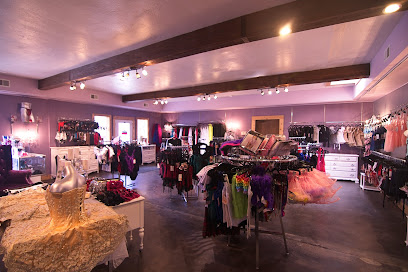
Bohemian Metals
Explore Bohemian Metals in Cheyenne, WY - a unique jewelry store with handcrafted pieces, crystals, and rock gems that celebrate artistry and nature.

Just Dandy
Explore Just Dandy, Cheyenne's charming women's clothing store, featuring unique fashion and accessories for every style.
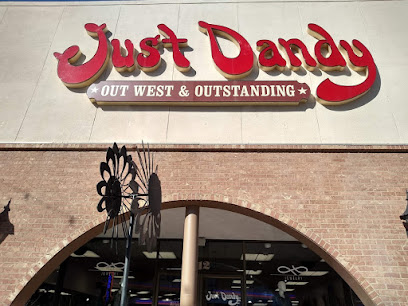
Wyoming Home
Explore Wyoming Home in Cheyenne for unique home goods that beautifully reflect local craftsmanship and the spirit of the West.

Collectors Hub
Explore the vibrant world of comics at Collectors Hub in Cheyenne, Wyoming, where every comic enthusiast finds their treasure.

Essential bars & hidden hideouts
Sanford's Grub & Pub
Experience the flavors of Cheyenne at Sanford's Grub & Pub, where delicious grill fare meets a vibrant pub atmosphere.
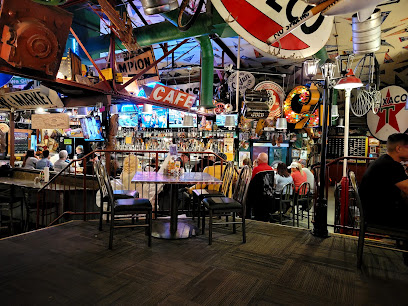
Applebee's Grill + Bar
Enjoy mouthwatering American classics at Applebee's Grill + Bar in Cheyenne, Wyoming, ideal for family dining and casual get-togethers.

The Office Bar and Grill
Experience the vibrant flavors of Cheyenne at The Office Bar and Grill, where hearty dishes and a welcoming atmosphere await every visitor.

Outlaw Saloon
Experience the lively atmosphere, delicious food, and vibrant live music at Cheyenne's Outlaw Saloon, a true Western gem in Wyoming.
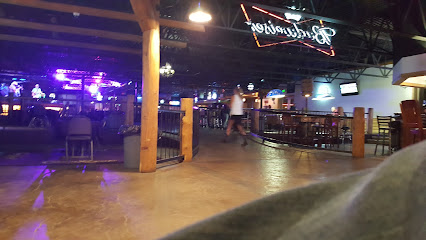
Uncle Charlie's Package Liquor, Grill & Tavern
Experience the vibrant flavors and welcoming atmosphere at Uncle Charlie's Package Liquor, Grill & Tavern in Cheyenne, Wyoming.

Pour Decisions Bar & Grill Cheyenne, WY
Discover the best grilled delights and vibrant atmosphere at Pour Decisions Bar & Grill, a top dining destination in Cheyenne, Wyoming.

Peppermill Bar and Liquors
Experience the lively atmosphere and extensive drink menu at Peppermill Bar and Liquors, a top nightlife destination in Cheyenne, Wyoming.

Alf's Pub
Discover the vibrant atmosphere of Alf's Pub in Cheyenne, Wyoming – where great drinks, delicious food, and good times await.

Crown Bar
Experience the lively atmosphere and diverse drink offerings at Crown Bar, Cheyenne's go-to destination for nightlife and socializing.

Ike's Bar and Grill
Discover the flavors of Cheyenne at Ike's Bar and Grill, where delicious food meets a welcoming atmosphere.

Cadillac Ranch Bar
Discover the lively nightlife at Cadillac Ranch Bar in Cheyenne, Wyoming – a perfect spot for drinks, music, and unforgettable memories.

Eagle's Nest
Discover the vibrant atmosphere of Eagle's Nest in Cheyenne, Wyoming, your go-to bar for exceptional drinks and a lively social scene.

Paramount Ballroom
Discover the Paramount Ballroom in Cheyenne, where unique cocktails and vibrant nightlife create unforgettable experiences.

Tusker Bar
Experience the vibrant nightlife at Tusker Bar in Cheyenne, Wyoming, where great drinks and a welcoming atmosphere await every visitor.

Redwood Lounge & Pkg Liquors
Discover Redwood Lounge & Pkg Liquors, Cheyenne's vibrant cocktail bar with great drinks and a friendly atmosphere, perfect for unwinding and socializing.

History of Cheyenne
-
Cheyenne was founded on July 4, 1867, as the Union Pacific Railroad was being constructed. It was named after the Native American Cheyenne tribe. The city quickly became a key railroad hub, attracting thousands of settlers, merchants, and railroad workers.
-
Fort D.A. Russell, established in 1867, played a crucial role in Cheyenne's development. The fort provided protection for the railroad and settlers from potential threats. Over time, it evolved into F.E. Warren Air Force Base, making Cheyenne an important military city.
-
Completed in 1890, the Wyoming State Capitol building is a significant landmark in Cheyenne. It symbolizes Wyoming's admission to the Union as the 44th state. The building's distinctive gold leaf dome and its neoclassical architecture are a testament to the city's historical and political importance.
-
First held in 1897, Cheyenne Frontier Days is an annual rodeo and western celebration that has become known as 'The World's Largest Outdoor Rodeo and Western Celebration.' The event showcases the rich cowboy culture and history of the American West, featuring rodeo competitions, parades, and concerts.
-
Opened in 1911, the Historic Plains Hotel is a landmark in downtown Cheyenne. The hotel has hosted numerous famous guests, including presidents and celebrities. Its Western-themed decor and historic charm offer a glimpse into the early 20th-century life in Cheyenne.
-
Built in 1886-1887, the Cheyenne Depot is one of the last remaining grand 19th-century depots. It served as a major stop on the Union Pacific Railroad and now houses the Cheyenne Depot Museum. The museum showcases the history of the railroad and its impact on Cheyenne's growth.
-
Founded in 1901, the Great Western Sugar Company played a vital role in Cheyenne's economy. The sugar beet industry brought agricultural prosperity to the region, and the company's factory became an important economic driver for the city and its surrounding areas.
-
Established in 1883, the Wyoming Hereford Ranch is one of the oldest continuously operating livestock ranches in the United States. The ranch's history reflects the significance of cattle ranching in Cheyenne and the broader Wyoming region, contributing to the area's agricultural heritage.
-
Founded in 1977, the Cheyenne Botanic Gardens serve as a symbol of community resilience and environmental stewardship. The gardens were built through the efforts of volunteers and have grown into a beautiful oasis that promotes sustainability and horticultural education.
-
Established in 1954, the Cheyenne Symphony Orchestra enriches the city's cultural landscape. The orchestra's performances highlight Cheyenne's commitment to the arts and provide residents and visitors with an array of classical and contemporary musical experiences.
Cheyenne Essentials
-
Cheyenne is located in southeastern Wyoming and is accessible by various means of transportation. The nearest major airport is Cheyenne Regional Airport (CYS), which offers limited regional flights. For more extensive flight options, Denver International Airport (DEN) is approximately 90 miles south and offers numerous domestic and international flights. From Denver, you can rent a car, take a shuttle, or use bus services to reach Cheyenne. Additionally, Cheyenne is accessible by car via Interstate 25 and Interstate 80, making it a convenient drive from various parts of the region.
-
Cheyenne is a relatively small city, making it easy to navigate. Car rentals are available at the airport and in the city, which is a convenient option for exploring both Cheyenne and the surrounding areas. Public transportation is limited but includes the Cheyenne Transit Program, which operates buses on several routes within the city. Taxis and ride-sharing services like Uber and Lyft are also available. Biking is another viable option, with several bike-friendly routes and trails throughout the city.
-
The official currency is the United States Dollar (USD). Credit and debit cards are widely accepted in most establishments, including hotels, restaurants, and shops. ATMs are readily available throughout the city for cash withdrawals. It is advisable to carry some cash, especially when visiting smaller establishments or local markets that may not accept cards.
-
Cheyenne is generally considered a safe city for tourists. However, it is always wise to take standard precautions. Avoid leaving valuables in plain sight in your car and be cautious when walking alone at night. While there are no specific high-crime areas targeting tourists, being aware of your surroundings and keeping an eye on your belongings in crowded places is recommended.
-
In case of emergency, dial 911 for immediate assistance. Cheyenne has several medical facilities, including Cheyenne Regional Medical Center, which provides comprehensive medical services. It is advisable to have travel insurance that covers medical emergencies. For minor health issues, there are numerous pharmacies in the city where you can purchase over-the-counter medications.
-
Fashion: Do dress in layers as the weather can be unpredictable. Comfortable walking shoes are recommended. Avoid wearing overly flashy or revealing clothing. Religion: Do respect local customs and traditions, especially when visiting historical sites or participating in local events. Public Transport: Do be respectful of others and give up your seat to elderly passengers. Don't be loud or disruptive on public transport. Greetings: Do greet people with a friendly smile and a handshake. A simple 'hello' or 'howdy' is commonly used. Eating & Drinking: Do try local fare, including regional specialties like bison burgers and trout. Don't be afraid to ask locals for restaurant recommendations. Avoid discussing politics or religion during meals as it may be considered impolite.
-
To experience Cheyenne like a local, visit the local farmers' markets for fresh produce and handmade goods. Engage with locals at community events such as the Cheyenne Frontier Days, a popular annual rodeo and festival. Explore the historic downtown area, which features charming shops, restaurants, and historical landmarks. Don't miss a visit to the Wyoming State Capitol and the Cheyenne Depot Museum to learn about the city's rich history. For a unique experience, take a scenic drive along the Happy Jack Road for stunning views of the surrounding landscape.
Trending Landmark in Cheyenne
-
Southeast Wyoming Welcome Center
-
2 Doors Down
-
Cheyenne Frontier Days
-
Terry Bison Ranch Resort
-
Curt Gowdy State Park
-
Cheyenne Botanic Gardens
-
Cheyenne Depot Museum
-
Wyoming State Museum
-
Holliday Park
-
The Historic Plains Hotel & Restaurant
-
Big Boy Steam Engine 4004
-
Accomplice Beer Company
-
Cheyenne Frontier Days Old West Museum
-
Flippers Family Arcade
-
Wyoming State Capitol
Nearby Cities to Cheyenne
-
Things To Do in Fort Collins
-
Things To Do in Laramie
-
Things To Do in Estes Park
-
Things To Do in Boulder
-
Things To Do in Sterling
-
Things To Do in Denver
-
Things To Do in Steamboat Springs
-
Things To Do in Breckenridge
-
Things To Do in Vail
-
Things To Do in Monument
-
Things To Do in Leadville
-
Things To Do in Colorado Springs
-
Things To Do in Aspen
-
Things To Do in Glenwood Springs
-
Things To Do in Canon City












